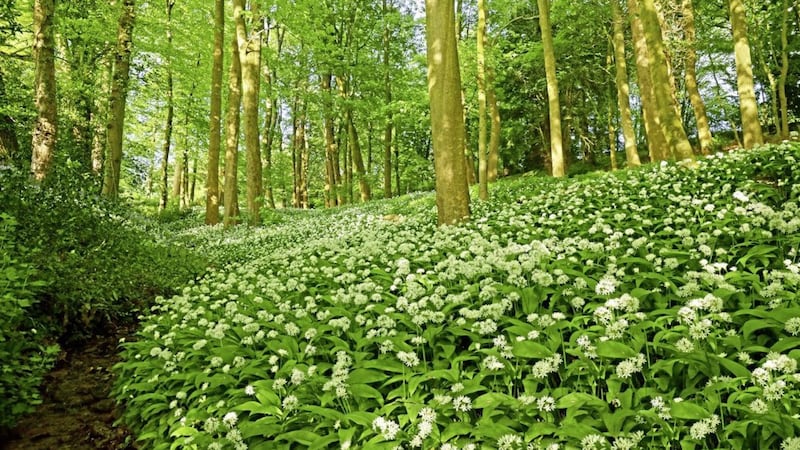EXPERIENCE has shown me we are all at times vulnerable to going 'astray' in life, hence my liking for the medieval Irish saga Buile Suibhne, the Madness or Frenzy of Suibhne.
It tells the story of how Sweeney, a 7th century King of Dal Araidhe, was banished to a life of wanderings and madness as half-bird, half-man in various locations through the Irish countryside.
This was all because of his Celtic hostility towards the emerging Christianity and his assault on the distinguished cleric Ronan, as well as one of his psalmists.
While the priest was marking out the boundary of a new church, an angry Sweeney arrived, grabbed his psalter and "flung it into the cold depths of a lake nearby, where it sank without trace".
Outraged at this sacrilegious abuse, Ronan cursed Sweeney saying: "He shall roam Ireland, mad and bare/He shall find death on the point of a spear."
Days later an otter returned Ronan's holy book in perfect condition.
This story of the exiled king living amongst plants and wild animals came to mind recently in a shaded woodland as I examined clusters of wild garlic coating the forest floor.
This plant of ancient woods and lore has long oval shaped, pointed leaves, which grow from the base and produce a strong scent, especially when torn or broken.
The small white flowers have six petals on a thin stem, one of a cluster which extend outward from a single stalk.
Wild garlic was highly valued as an important edible plant in ancient Ireland.
An archival record of folklore compiled by schoolchildren in Ireland in the 1930s mentions wild garlic being used as a protection against influenza in 1918: 'During the great epidemic of influenza, people carried garlic round with them as it was considered very good for keeping the flu away'
The leaves and bulbs were eaten raw or cooked, and often added to flavour other foods.
In Seamus Heaney's revised version of the text, titled Sweeney Astray (1992), the disgruntled outcast references wild garlic when he describes one of his favourite haunts, Glen Bolcain, as "nature's pantry/with its sorrels, its wood-sorrels/its berries, its wild garlic/its black sloes and its brown acorns".
The wild herb would later be greatly respected in Irish Brehon laws, with a fine of "two and a half milch cows" imposed on anyone stealing it.
In addition to its culinary uses, Allium ursinum was used in folk medicine and believed to have special protective powers.
Cloves of wild garlic were placed in the thatch of Irish cottages and elsewhere to fend off evil spirits and fairies, while Allen and Hatfield, in Medicinal Plants in Folk Tradition (2004), tell us the herb was also used for treating toothache, asthma, coughs, sore throats and rheumatic problems.
Tucked away in the archival record of folklore compiled by schoolchildren in Ireland in the 1930s, The Schools' Collection (1937-1939), is the following mention of wild garlic being used as a protection against influenza in Co Galway in 1918: "During the great epidemic of influenza, people carried garlic round with them as it was considered very good for keeping the flu away."
Known as creamh in Irish, the plant has many other common names such as ransoms, wood garlic, bear leek and bear's garlic, the latter two from its Latin name ursinum, originally 'ursus' meaning 'bear' referring to the brown bear's supposed liking for the bulbs.
Returning to Suibhne, who for years continued to roam the hills, glens and islands of Ireland, eating wild garlic, watercress, nuts and seeds; he spoke frequently and fondly of the many birds and animals he encountered, like the calling swans, "rising skylarks", "startled woodcock", "squealing badgers" and wild stags.
In the end, however, as prophesied in Ronan's curse, Sweeney was eventually killed by the spear of a jealous herdsman, with just a hint of reconciliation, under the final care of St Moling.








